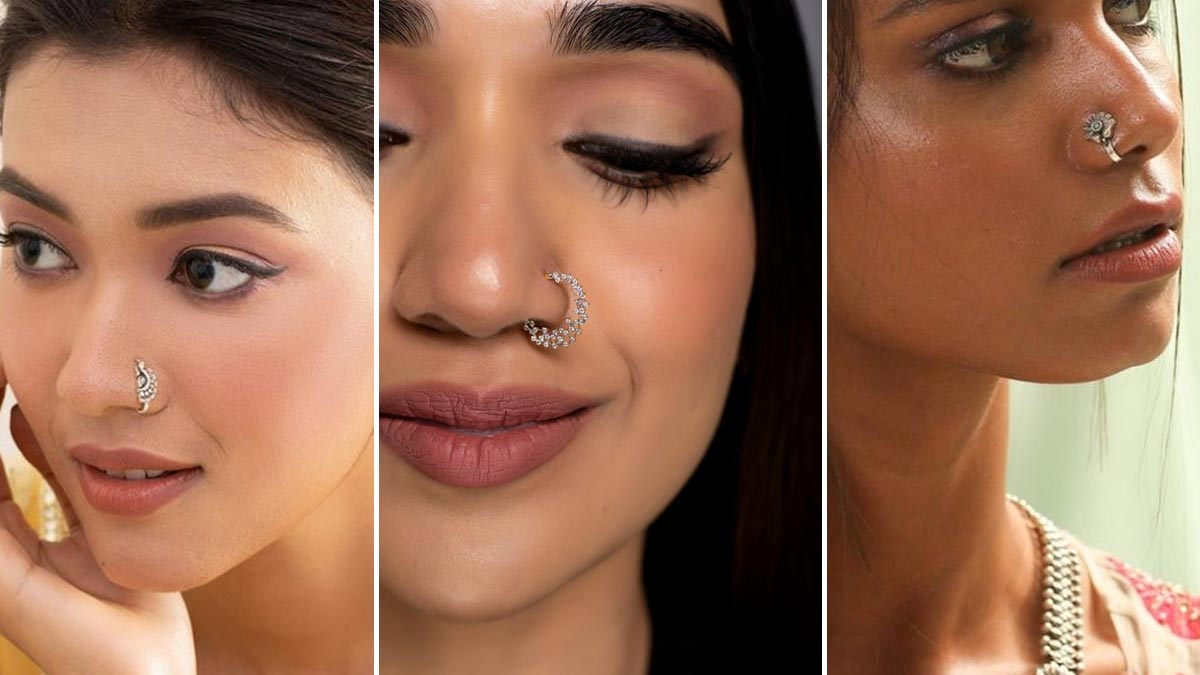Nose studs, as old as civilization, have been adored as well as adorned, and immortalized in a variety of styles of literature and art. In the world of poetry, these tiny, subtle embellishments have been incorporated into poems, telling stories of identity, rebellion, and self-discovery. As we dive into the vast expanse of poetry and literature, we see the tiniest glint of nose studs, enthralling readers with their beauty and symbolic meaning.
Historical Background:
Nose piercings, and in turn nose studs, are a fundamental element of religious and cultural practices all over the world. For writers, the custom frequently symbolizes rebellion against social standards and the assertion of one’s own identity. The glimmering nose stud is an evocative beacon, leading characters along their journeys through literature.
Nose Studs’ Significance:
In the world of poetry and literature, the nose studs represent various themes including femininity, rebellion, sensuality, sexuality, and identity. Writers and poets frequently use these symbols to symbolize characters’ internal conflicts and changes. The subtle inclusion in a story of the nose’s stud within an account can indicate an individual’s transformation, which is a departure from the usual or conventional and a move into the world of self-expression.
A Contemporary Take on the Hello Kitty Nose Ring:
In today’s literary world, the appearance of the Hello Kitty nose ring adds an unorthodox and playful aspect to this traditional nasal stud. This unique accessory, usually associated with youthful excitement as well as pop culture, makes its way into contemporary literature by challenging the established norms and provoking readers to rethink the standards that society sets for beauty and fashion.
Literary Examples:
In Jhumpa Lahiri’s “The Namesake,” the protagonist, Gogol Ganguli, grapples with his identity in the American Indian community. His mother gives him the gold nose stud, an evocative symbol of his culture as well as a symbol of reconnection to his ancestral roots. The nose stud is the focal point of the struggle for his identity, highlighting the tension between accepting the past while pursuing a new route.
Similar to Arundhati’s “The God of Small Things,” the character Ammu resists the social norms and challenges the traditional gender roles that women are expected to play. Her choice to wear a stud on her nose is an act of defiance in which she refuses to conform to social norms. The nose stud, in this sense, is an instrument of resistance and empowers Ammu to be herself.
Poetic Imagery:
In poetry, the nose studs are usually illustrated with vivid images that explore their appeal and significance. Poetry writers create verses that highlight the delicate nose studded against our faces, focusing on themes of beauty, identity, and love. A Hello Kitty nose ring, with its playful appeal, is a popular symbol within contemporary poems, representing the merging of rebellion and innocence.
Nose Studs as Literary Metaphors:
Nose studs in literature typically transcend the physical and become symbols for personal development, resilience, and change. Particularly, characters who are on a journey of self-discovery find strength and comfort in wearing their noses. The process of having an ear stud in the nose can be a sign of a milestone and is a time in a person’s life when they declare their identity and accept their uniqueness.
In the story of Khaled Hosseini’s “The Kite Runner,” the character Amir, who is struggling with guilt and redemption, ponders the consequences of his previous actions. When he decides to put on an earring is a sign of his commitment to confronting his fears, taking the burden of his actions, as well as seeking to forgive. The nose stud is an instrument of literature, expressing Amir’s journey from guilt to forgiveness.
Nose Studs Across Cultures:
Literature has a wide array of different cultures and customs, and each one has its own view of nose studs. Within Indian literature, specifically in the writings of authors such as Chitra Banerjee and Divakaruni’s the nose studs are woven into narratives, showing the significance that they have within the life of the characters. Female characters of Divakaruni often wear nose studs that symbolize their relationship to family, tradition, and their heritage. The nose stud is an iconic literary symbol, representing the character’s roots as well as the complex relationship between modernity and tradition.
In African literature, the nose studs are regarded as a symbol of beauty and embellishment. Writers such as Chimamanda Ngozi Adichie have incorporated nose studs into their narratives, which highlights their significance to the culture. In these stories, nose studs function as symbols of pride in culture as they challenge stereotypes and misperceptions regarding African practices.
Conclusion:
Nose studs – whether traditional or embellished in Hello Kitty’s playful charms are still captivating writers, and serve as powerful emojis of self-expression and rebellion. When readers read the complex narratives and poems that praise these accessories as they think about their journeys to self-identity and personal identity. The delicate glint of a stud on the nose in poetry and literature highlights the timeless impact of tiny gestures of symbolic meaning, urging us to celebrate our uniqueness and appreciate the power of self-expression even in the most bizarre shapes.




